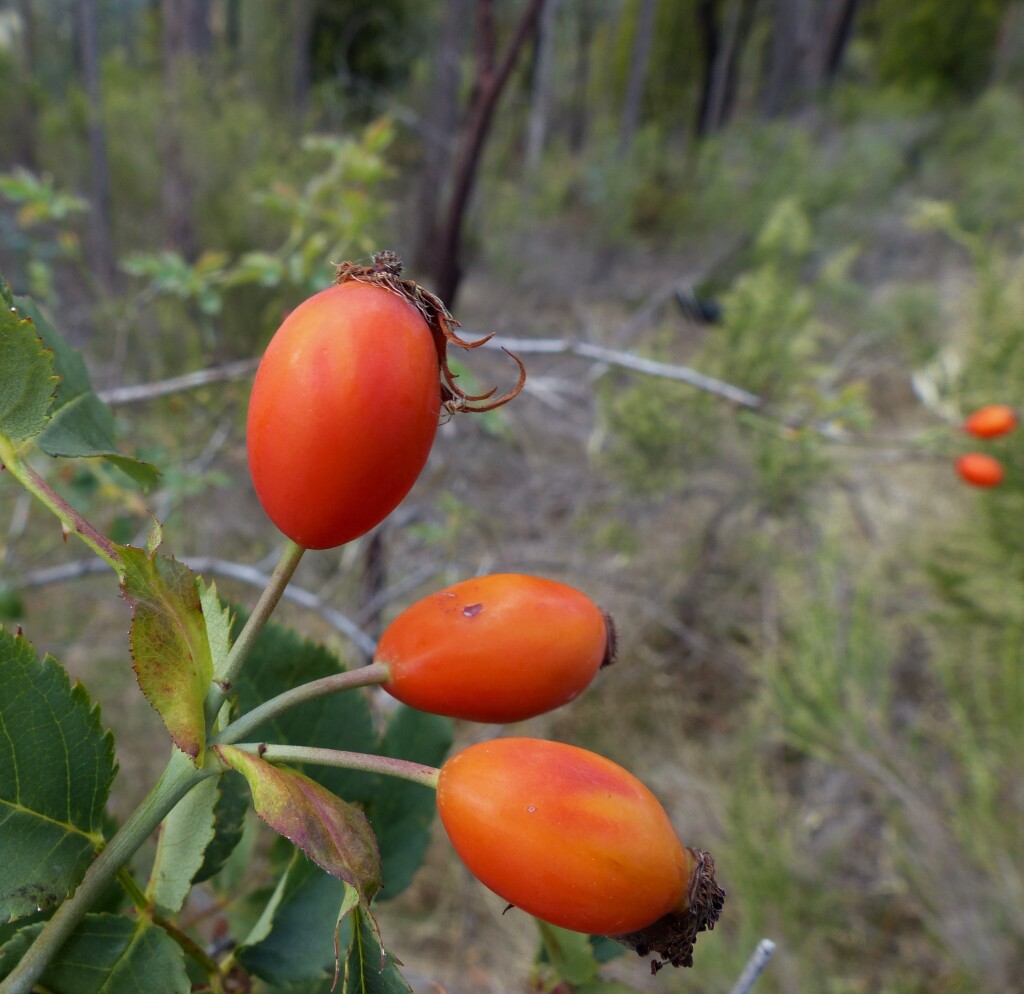Rosa rubiginosa
L. Sweet BriarErect or scrambling, pleasantly aromatic shrub to c. 3 m high; stems with sturdy curved prickles to c. 12 mm long, sometimes also glandular-hairy. Leaves pinnate, 5–7-foliolate; leaflets ovate to obovate or suborbicular, mostly 10–30 mm long, 5–20 mm wide, base and apex rounded, margins serrate, upper surface glabrous or hairy, lower surface usually with a mixture of simple and glandular hairs; stipules glandular. Flowers single or in few-flowered terminal corymbs; peduncles glandular-acicular, prickly. Sepals 5, outer ones often pinnatifid, glandular and spiny, hardly reflexed after flowering; petals 5, obovate to suborbicular, 8–25 mm long, emarginate, pink; stamens and styles numerous, styles free, not protruding. Hip ovoid to globose, 15–20 mm long, glabrous or with glandular hairs and bristles, red to almost black, sepals often persistent. Flowers Nov.–Jan.
MuM, Wim, GleP, VVP, VRiv, MuF, GipP, OtP, WaP, Gold, CVU, GGr, DunT, NIS, EGL, EGU, HSF, HNF, OtR, Strz, MonT, VAlp. Naturalised all States except NT. Native of Europe. Widespread across the State, in farmland, dryish montane woodland, stony rises of the volcanic plain, disturbed areas along roadsides or in moist riparian habitats, etc.
Plants somewhat intermediate between Rosa rubiginosa and R. canina have been collected near Mildura. These have virtually glabrous elliptic leaflets (glandular around the margins only) similar to those of R. canina but glandular-acicular and prickly peduncles like those of R. rubiginosa.
Jeanes, J.A.; Jobson, P.C. (1996). Rosaceae. In: Walsh, N.G.; Entwisle, T.J., Flora of Victoria Vol. 3, Dicotyledons Winteraceae to Myrtaceae, pp. 556–585. Inkata Press, Melbourne.
 Spinning
Spinning



